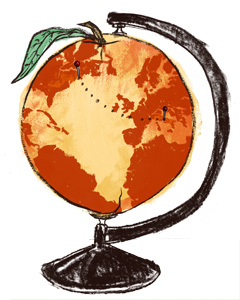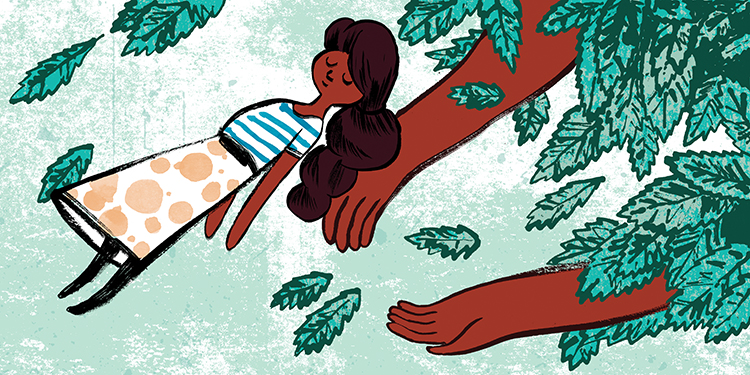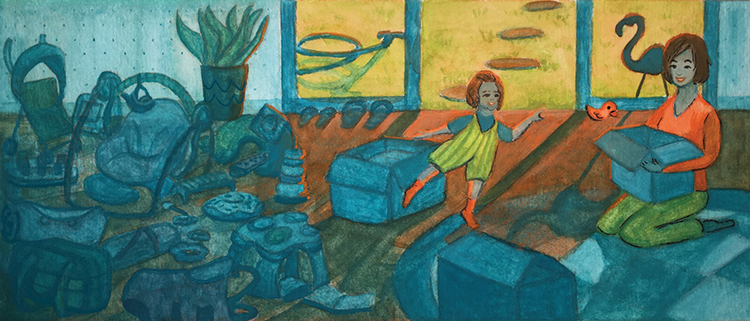 story by Julianne MesaricUntil my summer working at the Headhouse Farmers Market, I didn’t know what a real peach tasted like. The peaches from my childhood were firm, fuzzy globes—average, unmemorable pieces of fruit bought from the local box supermarket. Working at the Three Springs Fruit Farm stand changed that.
story by Julianne MesaricUntil my summer working at the Headhouse Farmers Market, I didn’t know what a real peach tasted like. The peaches from my childhood were firm, fuzzy globes—average, unmemorable pieces of fruit bought from the local box supermarket. Working at the Three Springs Fruit Farm stand changed that.
Ben Wenk’s peaches are heavy with sweet juice and thick meat, held together only by a thin layer of blushing, copper skin. After a few times eating his peaches, leaning over, juice dripping down my chin, I had one of those moments. “Oh,” I thought, “this is good food.”
That summer with Three Springs Fruit Farm was more than an introduction to peaches. I began asking about food—how it’s made, how it’s eaten and how it shapes our culture. I discovered that people across the world share my curiosity, and that Slow Food, a global nonprofit linking good food with local traditions and sustainable production, has even founded a university on the subject.
Last fall, I enrolled in a one-year masters program at Slow Food’s University of Gastronomic Sciences, an international school located in the small town of Pollenzo, Italy. The curriculum is designed to explore food from various perspectives: economically, historically, environmentally, politically, socially and creatively. There are regular classes, demonstrations, dinners and field trips meant to encourage direct interaction with food cultures.
The field trips have been an especially important part of the program, providing direct connections to talented producers and growers, whose passions and hard work maintain gastronomic traditions and fertile land. During the semester, my 26 classmates (from 16 countries) and I traveled throughout Switzerland, Greece and four regions in Italy. We had rye bread in the Swiss Alps, olive oil in northern Greece, Brunello (a red wine) in Tuscany, Parmigiano Reggiano in northern Italy, and dried pasta in Naples.
These trips can be mimicked in our own Philadelphia area; heirloom vegetables in Bucks County, eggs at a farm in West Philly, cheese made in Chester County and Pinot Grigio produced with Pennsylvania grapes. Our food trucks serve chicken raised in Lancaster County, and our restaurants boast wild mushrooms and produce from fields less than an hour away. And then there’s the home garden—grown in a pot, a yard or a community space—it’s a beautiful way to cultivate your time and passion.
Whether in Philadelphia or Italy, I found place responsible for shaping how one tastes, feels and shares food. In Italy, meals are almost always eaten together. Conviviality—or lack thereof—is a key element to understanding a food culture and something on which Slow Food puts a lot of emphasis. Some of the best lessons I had came from sitting around Tuscan tables and on picnic blankets, hearing about dishes made and eaten by students from all over the world.
Looking back, my experience with Three Springs was more than inspiration—it was where I had my first classes. And so, when I return to Philadelphia this fall I’ll have another opportunity to continue my education with a new sense of gratitude, and I couldn’t be more excited.
Before moving to Italy, Julianne lived in Northern Liberties and worked in public communications. She will graduate from the University of Gastronomic Sciences in November. Julianne can be reached at juliannemesaric@gmail.com.





